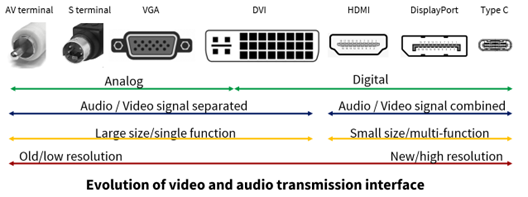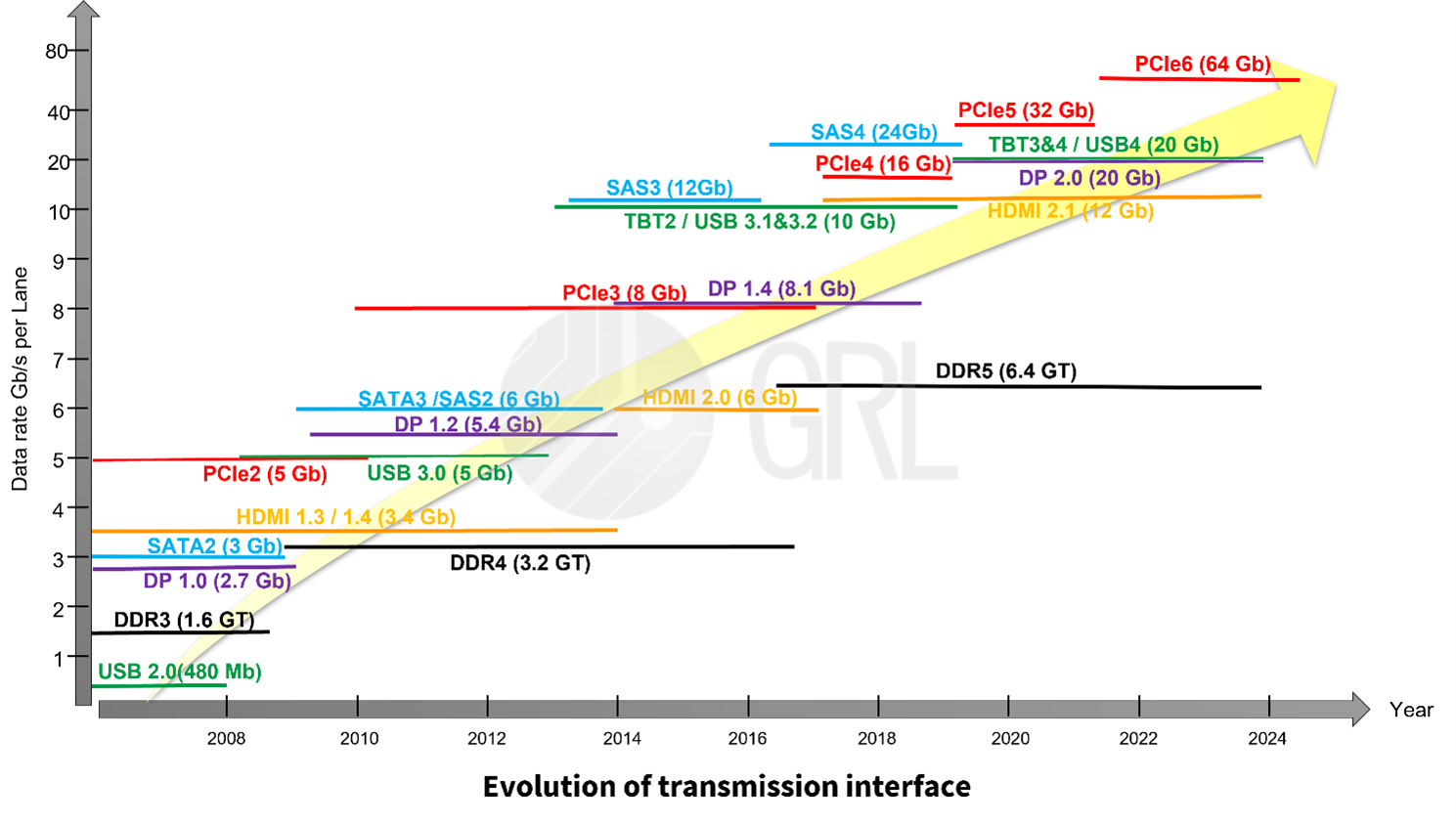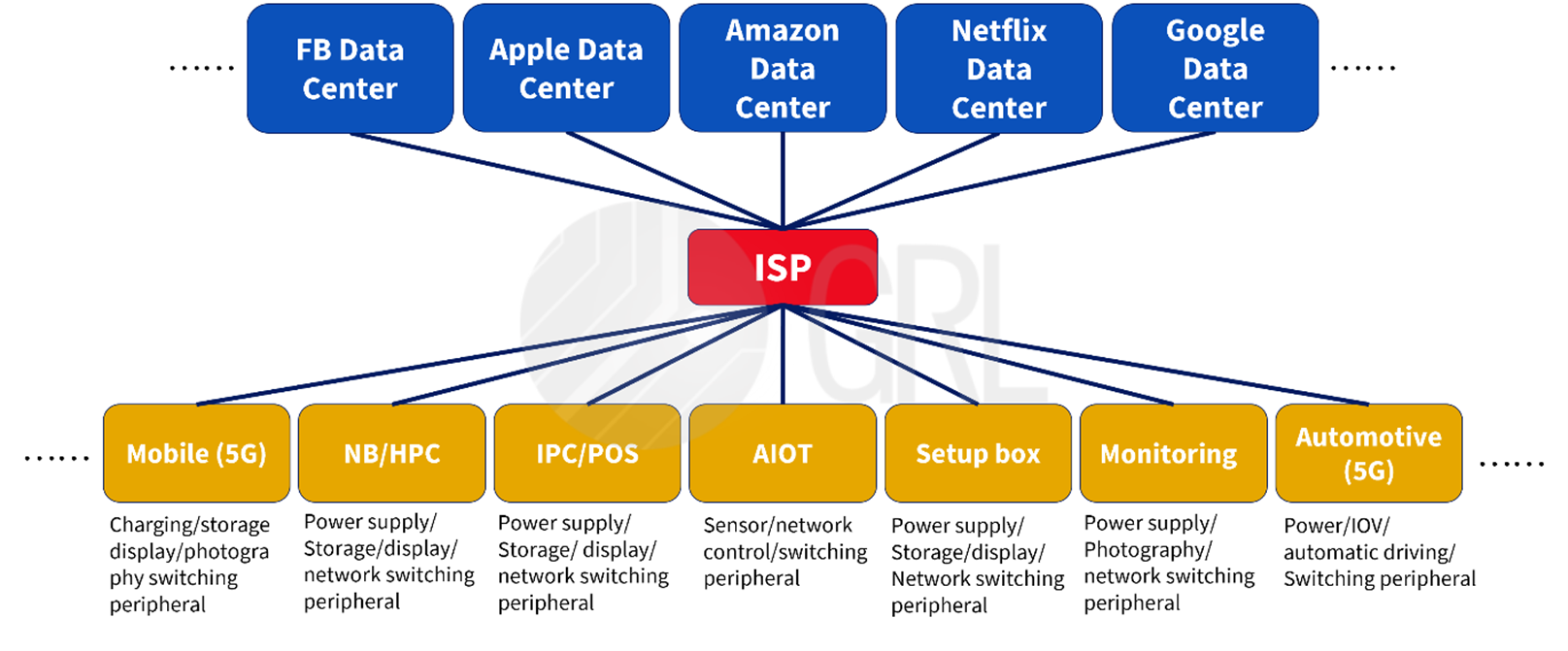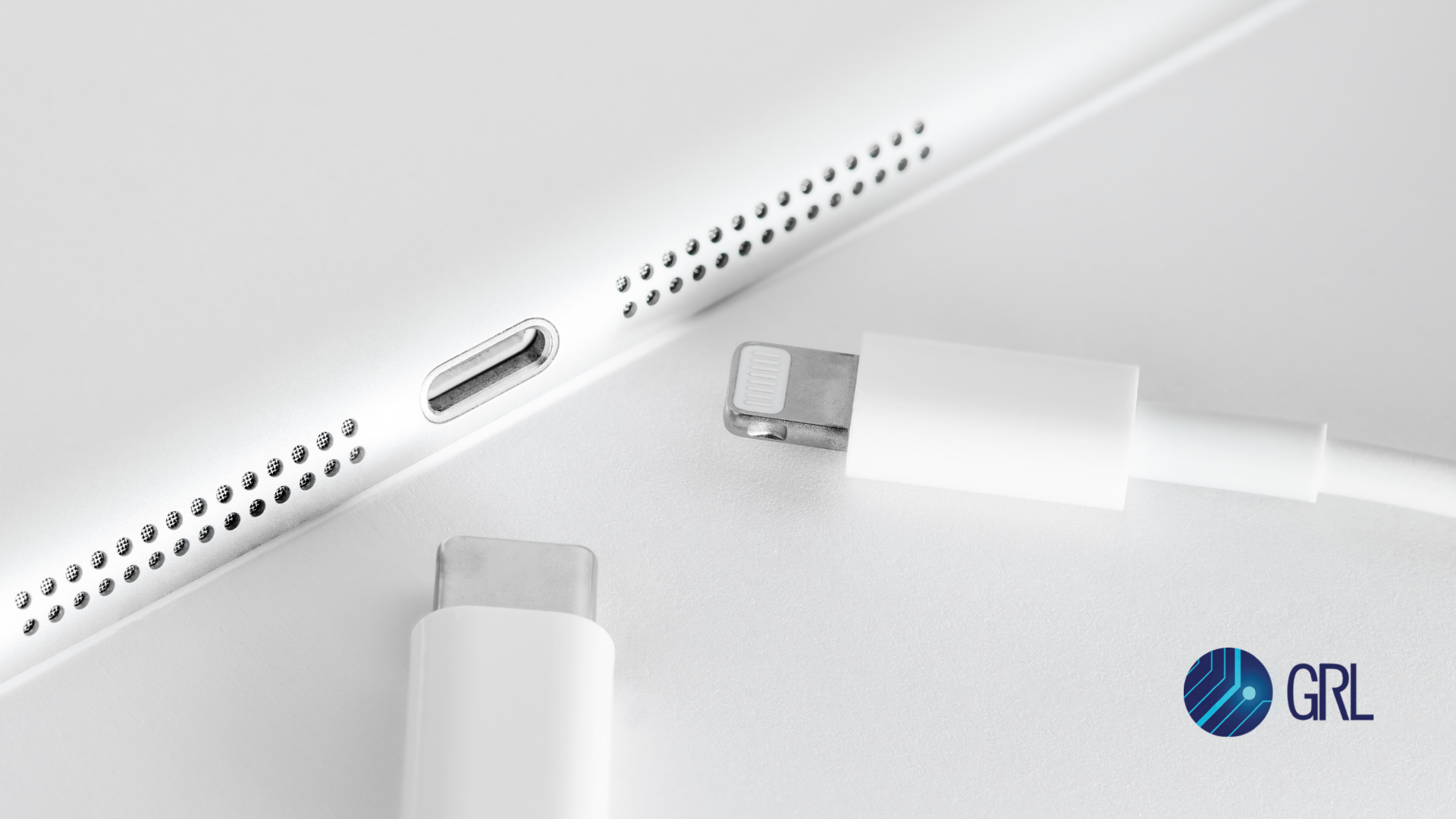Granite River Labs, GRL
Alan Chuang Yilin
The evolution of digital interfaces has made it more and more convenient for consumers to use the latest electronic products, but the interface landscape is changing rapidly and dramatically.
It was initially dominated by hardware interfaces from a few manufacturers. These have given way to an ecosystem that encourages contributions from multiple members and the formulation of common standards led by major associations. This has shaped today’s innovative and increasingly fast moving market.
The Evolution of Video and Audio Interfaces
Before personal computers became popular, the main options for display applications were analog television (TV) interfaces such as AV and S-Video terminals. That changed in the 1990s, when PCs began to proliferate and the market split into two main streams – TVs and dedicated computer displays. Demand for improved resolution saw interfaces switch from VGA to DVI and HDMI®, and from analog to digital.
The development of HDMI was dominated largely by two main use cases for audio and video products. One was focused on connecting antennas, set-top boxes, and player or game consoles for long-distance viewing. The other was designed to connect over much shorter distances directly to a computer. To address these different functions and requirements, VESA proposed the first DisplayPort architecture in 2006. DisplayPort became the main interface for computer displays and HDMI became the main interface for TVs.
The introduction of DisplayPort 1.3 brought bandwidth up to 32.4Gbps. This forced HDMI to increase its bandwidth to support higher resolutions and refresh rates, which in turn led to the launch of HDMI 2.1 (48Gbps) in 2017.
After obtaining authorization from Intel to use Thunderbolt technology, the USB-IF and VESA launched DisplayPort 2.0 (80Gbps) for the USB Type-C® interface. It can support resolution of up to 16K@60Hz and can transmit data simultaneously with a USB4® data stream. These attributes have made DisplayPort a popular and widely used interface in computer peripherals. However, adoption in the TV sector is still low.

Figure 1: The Evolution of Video and Audio Transmission Interfaces
The Development of Data Transmission Interfaces
As Figure 2 demonstrates, PCI Express® (PCIe) has taken the lead in increasing data transmission speeds. In the last 20 years, PCIe has been used as the main external transmission interface for ICs by the majority of mainstream CPU, GPU and core processor producers. Due to improvements in IC design, and progress in semiconductor manufacturing, the original PCIe1 capable of 2.5Gbps per lane has evolved into PCIe6, which offers 64Gbps per lane. However, the materials used in PCBs have gradually approached the physical limits of mass production. Compensation mechanisms at the transmitting and receiving ends – such as Pre-amp, Pre-shoot, amplitude negotiation, CTLE, FFE, DFE and other technologies – are all being used to overcome the limitations of PCB and cable materials.
Storage application interfaces, such as SATA and SAS, are being directly replaced by PCIe. As more products use SSD designs, PCIe can be directly connected to an IC without the need to build other bridging solutions into the architecture. This means that complex designs can be simplified.
In addition, interfaces such as Thunderbolt, USB and DisplayPort can be integrated into USB Type-C®. The integration of interfaces makes it very convenient for end-users to manage images, sound, data, controls and power supplies. However, IC and product developers still must spend time verifying the design's performance and compatibility. Ensuring consistent quality and compatibility is the primary mission of standards associations and authorized testing laboratories like GRL.
 Figure 2: The Evolution of High-Speed Transmission Interfaces
Figure 2: The Evolution of High-Speed Transmission Interfaces
The IEEE802.3 is a cornerstone of network communication and operates on the forefront of technology. As Table 1 shows, the maximum speed of Ethernet is currently 112Gb/s. However, it is not enough to use NRZ architecture to transmit data one bit at a time. With PAM architecture, data can be transmitted at more than 2 bits at a time.
Since the data rate been limited by PCB materials and components, the easy way to transmit more data is by altering the voltage amplitude, and this new data protocol is no longer to distinguish of data and video format. These represent the next trends in interface development.
Advances in data center technology often trickle across to consumer electronics. For example, Ethernet has long been the main technology in data centers. However, the USB4 and DisplayPort 2.0 technologies that have become common in consumer electronics products are actually very similar to Ethernet. USB4 and DisplayPort 2.0 use the same technology as Thunderbolt – such as the CIO (Converged-IO) Protocol. In the early days, Thunderbolt transmitted data at 10.3125Gb/s and 20.625Gb/s and used concepts like networking IP addresses for device identification, with all data types loaded in Tunneling mode. These approaches are all similar to Ethernet technology.
 Table 1: Interface Data Rates
Table 1: Interface Data Rates
With the rapid development of cloud databases, it seems clear that soon the majority of terminals will not need to be particularly powerful. They will only require sufficient processing capacity to receive, present and transmit text, images, audio, and video.
Data centers can already accommodate massive volumes of data storage and computing capacity. This, in turn, increases the pressure on wired and wireless networks. Accommodating ongoing demand will depend on new hardware to support more cloud applications and intelligent computing for huge amounts of data. Emerging trends, such as the development of quantum computer technology and the 6G star chain are laying the groundwork for powerful new data centers.
Of course, this also creates new network security challenges that cannot be ignored.

Figure 3: The Evolution of High-Speed Transmission Interfaces
Author
Alan Chuang – General Manager, GRL Greater China
With a solid technical background, combined with 15 years of multi-disciplinary experience – from business vision to hands-on product development in the electrical and electronic testing and instrumentation industry – Alan is an expert on a variety of transmission interface technologies and applications. As General Manager of GRL Greater China, he is responsible for the business development and future development goals of three laboratories, in Dongguan, Shanghai and Taipei.
Specifications and descriptions in this document are subject to change without notice.




